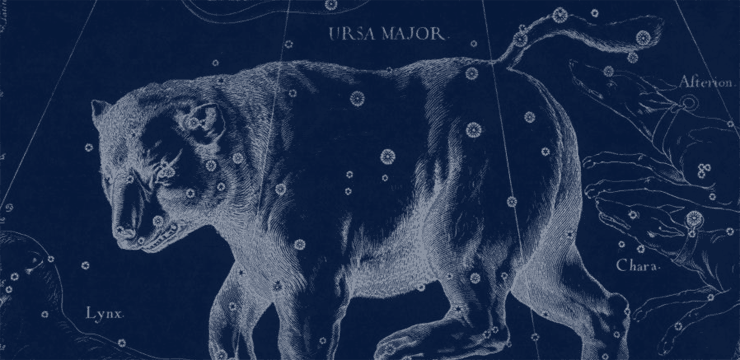December Constellations & Folklore
December 2011 :
As you watch Orion rise higher and higher above the horizon, on its way to its upright position due south with every colder and colder seasonal night, you might notice that it comes equipped with a pair of stars just above its majestic figure. These are Castor and Pollux. It's easy to remember which is which, because in the alphabet "C" comes before "P," and Castor rises before Pollux, leads it across the sky, then sets first below the western horizon. Castor and Pollux are traditionally referred to as the heads of Gemini, the Twins, a very unusual set, in fact, for they had different dads. Pollux was the son of Jupiter, and therefore was immortal, while his brother's father was a human being. Unfortunately, as happens to humans, Castor lost his life in battle, and Pollux was so distraught at losing his beloved brother and best friend that he asked his father to be with Castor always. As a compromise, which we see in the sky, for half the year Castor returns to Earth, to be with Pollux. The constellation from this latitude virtually travels over our heads, two brothers visibly happy to be here. But then, when the warmer weather starts to come back, the brothers soon disappear below the western horizon, letting us know that Pollux must now join Castor in his world, Hades. This constellation is very easy to see, as the two brothers actually are stick figure fraternal twins, sitting just above Orion's shoulders.
To the right, or west, of Gemini is an almost perfect pentagon shape. Early traditions had this as one of the shields belonging to Neptune, but somehow this got changed to depict a man riding a chariot, Auriga, the Charioteer. His reason for being in the sky is in question, but some believe he represents the son of Vulcan who was unable to walk properly and thus invented the chariot, a move which cause him to become forever immortalized in the sky.
Auriga's brightest star, Capella, also was important in mythology as it was often called the "goat star." Some have it as the goat that gave life to the baby Jupiter, who broke off one of the goat's horns. To make up for this faux pas, Jupiter took the horn and gave it magical powers, to the extent that the person in possession of it could have it filled with whatever he wished it to be filled with. This was called the "cornucopia," or horn of plenty, a symbol of the holidays to this day. Also, if you look just to the south of Capella, you might see a dim triangle. These three stars are collectively referred to as the three little kids, being protected by Capella.
Once these two constellations are within easy viewing with the previously described winter constellations, you might just see a very easy way to put all of the bright stars of this season together. Simply begin at Capella, move to the left, or east, to first Castor, then Pollux, keep to the left but go downward to the little dog star Procyon, almost straight down to brilliant Sirius, now right, or west, to Rigel, move right and slightly up toward the Bull's eye, Aldebaran, then take a hard left to Betelgeuse. Notice, you've made an almost prefect letter "G." This asterism, made up of the brightest stars in the winter sky, is called the Heavenly G, and, if you're in a city sky, you might realize that now that you've seen it, the rest of the constellations are rather dim and might be a bit difficult to resolve again.
The last constellation in this winter set can be found by once again going to Orion's belt, but this time move downward below his knees. You might find six stars arranged in a really crooked rectangle. This is Lepus, the Rabbit. Some of us feel really bad for this poor little creature, hiding below the greatest hunter that ever lived. Surprisingly, very early myths had this part of the sky listed as a bird, which seems to make more sense, as the basic shape could possibly be looked on as a wing. However, when this metamorphosis occurred, the rabbit was left with two avian characteristics: First, as his shape suggests, he could fly. And secondly, the more important reason to have a rabbit in the sky, Lepus could lay eggs. This little constellation is the celestial representation of the Easter Bunny. And, even though Lepus is a part of the winter sky, regardless of when the moveable feast of Easter occurs, anywhere from immediately after the vernal equinox to the end of April, Lepus is still in the early evening sky, overlooking all who spend their time hunting everywhere for his cache of Easter eggs.
When to Observe
Constellations
Related Topics




